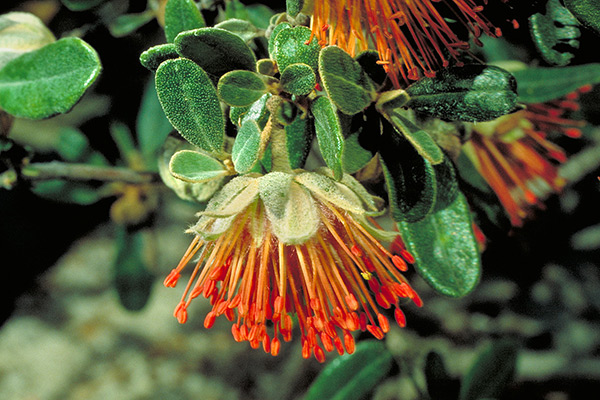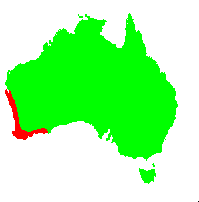General Description:
Diplolaena is a genus of 15 species, all restricted to the south of Western Australia. The genus is unusual among the Australian members of the Rutaceae (which includes the well known Boronia and Eriostemon) in having flowers in which the stamens are the most conspicuous part. In this respect they are more like some of the genera in the Myrtaceae such as Melaleuca and Callistemon. On first sighting, most people find it difficult to accept that Diplolaena is related to Boronia.
The genus Chlorilaena, with a single species (C.quercifolia), is closely related to Diplolaena and has a similar flower arrangement.
The individual flowers of Diplolaena species are very small but they are grouped together into large clusters which may be up to 40 mm across (in D.grandiflora)
D.microcephala is a widespread species and grows to about 1.5 metres high by a similar spread. There are three varieties recognised; var. microcephala, var. drummondii, var. velutina. These differ mainly in the structure of the leaves and floral bracts.
The leaves are greyish-green, hairy and oblong in shape up to 30-40 mm long. The flowers occur at the ends of the branches in spring in pendant clusters about 25 mm across, surrounded by green bracts. The prominent stamens are green to red in colour.
D.microcephala is a very attractive plant for well drained situations in sun or semi shade. The species will withstand moderate frosts and is most suited to a Mediterranean climate where wet, humid summers are not experienced. It can be grown in humid areas but it can be difficult to maintain successfully. The hairy foliage can lead to fungal attack under warm, humid conditions.
In common with many other members of the Rutaceae, propagation from seed is difficult and, in any case, seed is rarely available. Cuttings are successful using firm, current season’s growth, however, the cuttings need to be watched for the development of fungal disease on the foliage and any infected material must be removed immediately.

Diplolaena microcephala
Photo: Brian Walters
 Australian Native Plants Society (Australia)
Australian Native Plants Society (Australia)